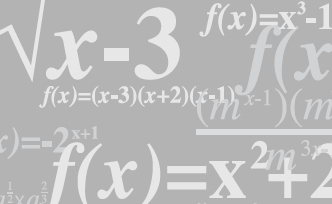
This webpage is designed as a resource for anyone working with deaf/hard of hearing students in a math class.
I have compiled resources that I thought may be useful for educators and interpreters that work a math classroom.
 |
This webpage is designed as a resource for anyone working with deaf/hard of hearing students in a math class. I have compiled resources that I thought may be useful for educators and interpreters that work a math classroom. |
|---|---|
 |
|||||||||||||||||||||||||||||||||||||||||||||||||||||||
|---|---|---|---|---|---|---|---|---|---|---|---|---|---|---|---|---|---|---|---|---|---|---|---|---|---|---|---|---|---|---|---|---|---|---|---|---|---|---|---|---|---|---|---|---|---|---|---|---|---|---|---|---|---|---|---|
I am a senior in Western Oregon University's ASL/English Interpreter Education Program. I have created this webpage for one of my classes, "Interpreting in Educational Settings". I plan to work in post-secondary educational settings after I graduate and I have particular interest in interpreting for math classes. I completed my first Bachelor's degree in 2003, my major was the arts and my minor was math. As a student I have always enjoyed math classes, even though they were challenging and frustrating at times. It was through my math courses (in college) that I developed a stronger work ethic and learned to value persisitence in times of frustration. I hope that the research and resouces I have compiled here are useful in your work. My hope is that this information will begin a dialogue about our work with deaf and hard of hearing students in math classes and how to make the language of math accessible for all students. |
|||||||||||||||||||||||||||||||||||||||||||||||||||||||
 |
|||||||||||||||||||||||||||||||||||||||||||||||||||||||
Literature: Cocking, R.R. & Mestre, J.P. (1988.) Linguistic and cultural influences on learning mathematics. Hillsdale, New Jersey: Lawerence Erlbaum Associates. This book covers a variety of topics that relate to the language and culture infused into mathematics in the classroom. I focused my research on Chapter 13 which focuses on English Language Learners and the Linguistic features of math they encountered and struggled with. The last portion of this webpage is a chart I created based on that research. Hyde, M., Zevenbergen, R., & Power, D. (2003). Deaf and hard of hearing students results on arthimatic word problems. American Annals of the Deaf, Volume 148, pp. 56 - 64. This was a study conducted in Norway of deaf and hard of hearing Elementary School students performance on arthimatic word problems. They conducted interviews with each student to ask for explainations of their answers. They classified a variety of problem solving techniques used by students. Kelly, R.R., Lang H.G., Mousley, K., & Davis, S.M. (2003, Spring). Deaf college students' comprehension of relational language in arithmetic compare problems. Journal of Deaf Studies and Deaf Education,(8:2), pp. 120 – 132. This was study done of college freshman at Rochester Institute of Technology. They were studying the affect of English reading levels and comprehension of mathematical word problems. They did find a relationship between students' reading levels and comprehension and preformance of word problems. There was one errors that did not seem to prove this relationship and that was Reveral Errors of inconsistant word problems. Dispite the student's reading level deaf and hard of hearing students consistently had more errors than their hearing peers. Kelly, R.R. & Mousley, K. (2001). Solving word problems: More than just reading issues for deaf students. American Annals of the Deaf, 146(3), pp. 251 – 262 This was another study of college students at Rochester Institute of Technology. One of the biggets findings from their research was that many students had an immediate negative reaction to the math word problems, even though they performed quit well on the graphic math problems. They identified an attitudinal barrier that seemed to exist for deaf and hard of hearing students that didn't show for their hearing peers.
Signing for Math: This is a list of a few online resources I found that may be helpful for those that want to learn signs for math terminology. American Sign Language - Math Elementary - online dictionary American Sign Language - Secondary - online dictionary Rochester Institute of Technology - Science/Math Lexicon Preparing for content: Detailed Math Dictionary: Internet Resources for Educators: "Working Together: Faculty and Students with Disabilities" Acessing Electronic and Information Technology "The Winning Equations: Access + Attitude = Success in Math and Science" Strategies For Teaching Deaf/Hard of Hearing Students |
|||||||||||||||||||||||||||||||||||||||||||||||||||||||
 |
|||||||||||||||||||||||||||||||||||||||||||||||||||||||
I created this chart based on a chapter from the book Linguistic and cultural influences on learning mathematics (Cocking & Mestre, 1988). The book is listed in the above section titled "Resources". I found it helpful, from an interpreter's perspective, to look at the linguistic features of math word problems so I could consider how to make the "language of math" most accessible for deaf and hard of hearing students.
(1988, Spanos, Rhodes, Dale and Crandall, p. 226 – 227)
Sprano, G., Rhodes, N.C., Dale, T.C., Crandall, J. (1988). Chapter 13 linguistic features of mathematical problem solving: Insights and applications. In R.R. Cocking & J.P. Mestre (Eds.) Linguistic and cultural influences on learning mathematics (pp. 221 – 240). Hillsdale, New Jersey: Lawerence Erlbaum Associates, |
|||||||||||||||||||||||||||||||||||||||||||||||||||||||